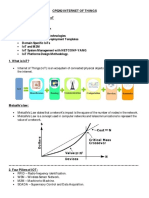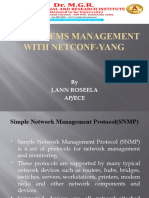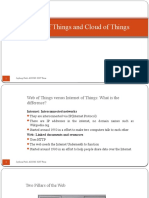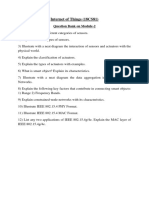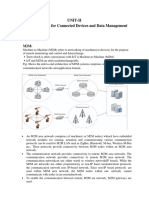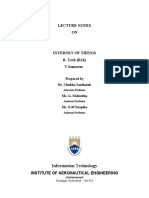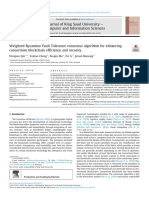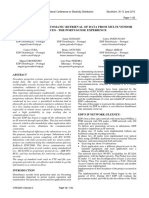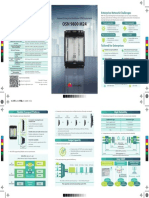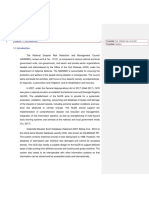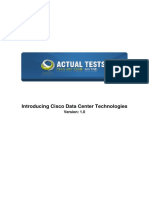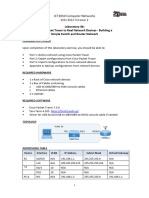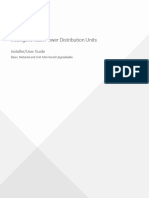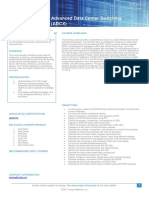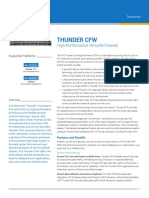100% found this document useful (1 vote)
2K views69 pagesCourse Notes-Unit 1
This document provides an introduction to the concepts of the Internet of Things (IoT).
It defines IoT as a network of physical objects embedded with sensors and connectivity that enables the collection and exchange of data. It discusses where IoT is used such as in wearable devices, smart homes, and healthcare. While IoT integrates existing technologies, it is not a entirely new technology.
The document outlines the architecture of IoT including its physical design of connected things and protocols, as well as its logical design of functional blocks, communication models, and APIs. It also discusses IoT enabling technologies and deployment templates that involve different levels of processing from local to cloud-based.
Uploaded by
Ayush SengarCopyright
© © All Rights Reserved
We take content rights seriously. If you suspect this is your content, claim it here.
Available Formats
Download as PPTX, PDF, TXT or read online on Scribd
100% found this document useful (1 vote)
2K views69 pagesCourse Notes-Unit 1
This document provides an introduction to the concepts of the Internet of Things (IoT).
It defines IoT as a network of physical objects embedded with sensors and connectivity that enables the collection and exchange of data. It discusses where IoT is used such as in wearable devices, smart homes, and healthcare. While IoT integrates existing technologies, it is not a entirely new technology.
The document outlines the architecture of IoT including its physical design of connected things and protocols, as well as its logical design of functional blocks, communication models, and APIs. It also discusses IoT enabling technologies and deployment templates that involve different levels of processing from local to cloud-based.
Uploaded by
Ayush SengarCopyright
© © All Rights Reserved
We take content rights seriously. If you suspect this is your content, claim it here.
Available Formats
Download as PPTX, PDF, TXT or read online on Scribd
/ 69



